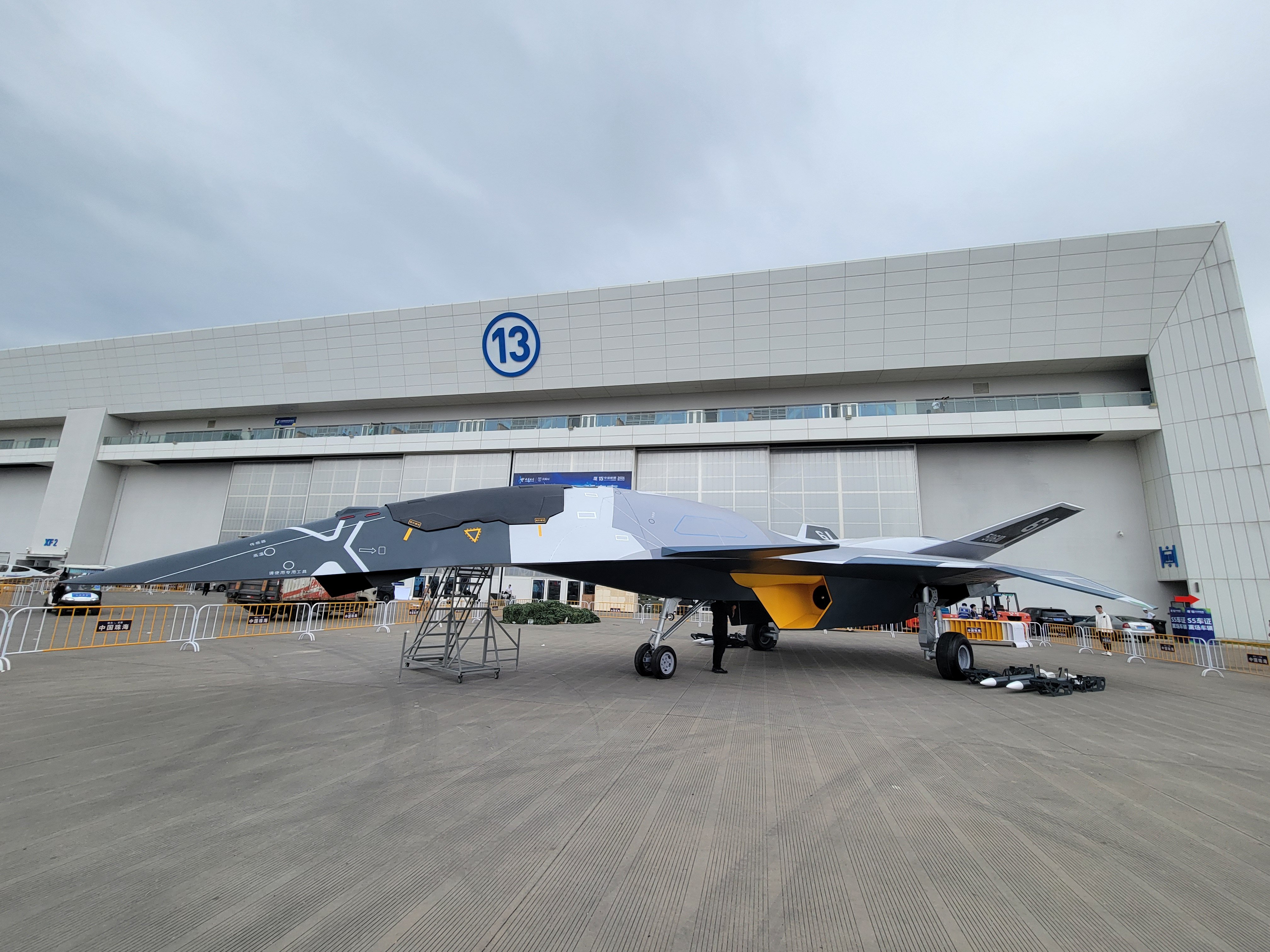China has revealed a bold new vision for future air combat by unveiling a sleek, futuristic fighter jet that Beijing claims can break through the Earth’s atmosphere and operate in space. The jet has already become the highlight of the Zhuhai Airshow 2024, which kicked off on November 12.
Dubbed the “Baidi” or “White Emperor,” this cutting-edge aircraft model is showcased as part of China’s ambitious Project Nantianmen, a research initiative to explore future aerospace technologies. Social media users began sharing images of this next-generation fighter jet on November 11.
According to information provided at the airshow, the Baidi is envisioned as an “integrated space-air fighter,” capable of supersonic flight and breaking through the Earth’s atmosphere to operate in space, a feature that places it at the forefront of next-generation aviation.
The Aviation Industry Corporation of China, a state-owned aerospace and defense conglomerate, created the aircraft model.
The aircraft’s specifications remain largely under wraps, but its placard offers some insights into its features. The Baidi’s internal weapons bay has been expanded to accommodate heavy air-to-ground munitions, signaling its role in versatile combat scenarios.

It further added, “The Baidi Type B fighter has also received a comprehensive avionics upgrade, enhancing cockpit ergonomics and simplifying maintenance procedures, which effectively boosts its deployment capability and operational efficiency.”
The Baidi’s appearance at the Zhuhai Airshow, just a day after the 75th anniversary of the People’s Liberation Army Air Force (PLAAF) on November 11, further highlights its importance in China’s long-term military modernization plans.
Its sleek, otherworldly design has drawn comparisons to the future of warfare, offering a glimpse into China’s aspirations for a more advanced, multi-domain air force.
One of the most striking aspects of the Baidi’s design is its cockpit. Hong Kong-based CMP reported that Global Times, a publication affiliated with the Chinese Communist Party, was granted access to the prototype before the airshow’s official opening.
The reporter described the cockpit as “extremely spacious” and noted the presence of a “futuristic” canopy.
Military observers remain cautious, noting that while the Baidi is an exciting concept, its true capabilities and future development are still uncertain.
Some speculate that the aircraft could be a prototype for future PLAAF models, though this has not been officially confirmed. Despite these uncertainties, Baidi’s introduction marks a step in China’s ongoing efforts to position itself as a global leader in aerospace technology and military innovation.
The Race For Sixth-Generation Aircraft
The competition to develop sixth-generation aircraft has reached a fever pitch, with several nations racing to establish dominance in this new era of aviation technology.
While China has showcased what appears to be a mockup of its sixth-generation aircraft, the United States is currently ahead in the race, particularly with its development of the B-21 Raider.
The B-21 Raider, which is considered the first operational sixth-generation aircraft, is a cutting-edge bomber that has been under development since 2011. The US awarded major development contracts for the project in 2015, but the details were kept under wraps for several years.
The US military did not reveal the bomber to the public until 2022. After making its first successful flight in November 2023, the B-21 underwent an extensive testing phase, with at least three units currently being evaluated. So far, none of the tests have encountered any major issues, and the bomber is scheduled to enter service in the mid-2020s.
In contrast, China is also working on its sixth-generation bomber, known as the H-20. However, it is reported that it will take several more years before the H-20 is ready for public unveiling.

Yet, given China’s tendency to surprise the global community with its rapid advancements, it remains uncertain when the H-20 will be fully operational and unveiled to the world.
Other countries’ programs are also underway, with nations worldwide advancing their sixth-generation fighter jet projects.
These include the USA’s Next Generation Air Dominance (NGAD) program, the UK-led Global Combat Air Program (GCAP), and the German-French Future Combat Air System (FCAS).
The NGAD program, however, has faced significant challenges, primarily due to soaring costs, which have prompted a reassessment by the US Pentagon. Meanwhile, the FCAS project has encountered delays owing to disagreements between France and Germany.
On the other hand, the UK government recently gave the go-ahead to the GCAP, a joint project between the UK, Japan, and Italy, as reported by the EurAsian Times.
China In U.S. Backyard: Beijing Funded “Largest Port” In Americas To Be Inaugurated By Xi Jinping
If the program progresses as planned, the GCAP could emerge as the world’s second sixth-generation aircraft—unless China surprises the global community with an unexpected, early unveiling of its own fighter jet.
Despite these advancements, the precise criteria for a sixth-generation fighter remain undefined. This leaves room for flexibility, as each country may set its own “sixth-generation” technology standards.
However, these next-generation fighters are expected to feature enhanced capabilities, including high-speed supersonic flight, all-direction stealth, and the integration of directed-energy weapons such as lasers and high-powered microwave systems, all of which will demand even greater engine power.
The country that first develops and deploys such a fighter jet could set the benchmark for the future of military aviation.
- Contact the author at ashishmichel(at)gmail.com
- Follow EurAsian Times on Google News




